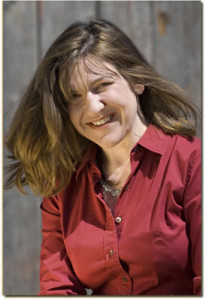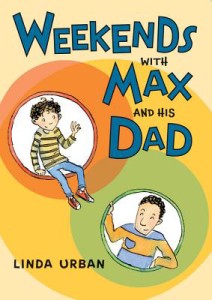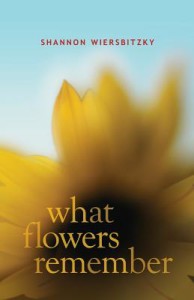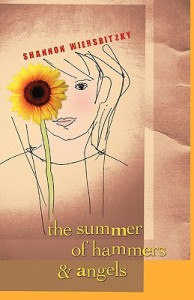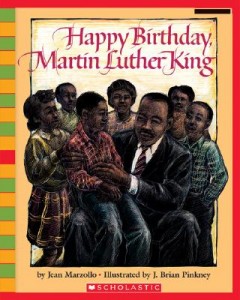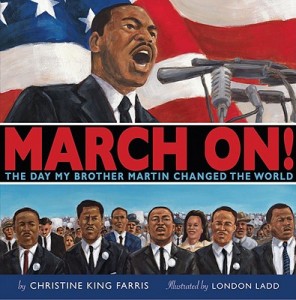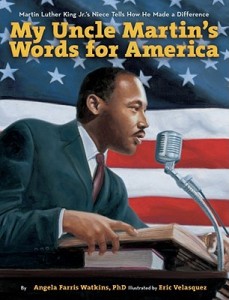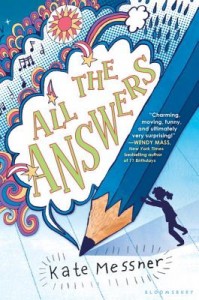This past Fall at the 2015 NCTE conference, I heard Linda Urban (and several other authors) speak with teacher, Melissa Guerrette about writing. It was fascinating! They also talked about MILO SPECK, and an interesting collaboration that developed between Linda and Melissa’s class. I’m excited to share Part 2 of a 3-part post about Milo and that collaboration. (Part 1 can be found here.)
DIANNE: Your presentation at NCTE this past November inspired me on so many levels. As a former teacher, I loved the way your collaboration with authors helped make the writing process both visible and REAL for your students. For those who didn’t have the benefit of seeing your presentation, can you give a brief overview?
MELISSA: I’m so glad to hear that our presentation has left you thinking. Thank you for saying so! Collaborating with authors has been important for students…and also for me. This work has prompted me to look more closely at the authenticity of my writing instruction, and I think it pays dividends for students.
The opportunity to connect with authors has helped students recognize the person–the author–who has worked tirelessly at this creation. You know, we fill our classrooms with impressive books and devote a lot of energy to 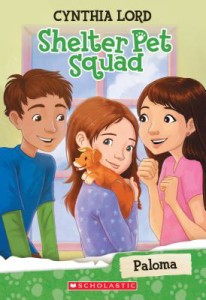 sharing and showcasing mentor texts that we hope will serve as models and inspiration for the students’ writing, yet–as beautiful as they are–these finished products with their shiny covers and important print are just that: products.
sharing and showcasing mentor texts that we hope will serve as models and inspiration for the students’ writing, yet–as beautiful as they are–these finished products with their shiny covers and important print are just that: products. 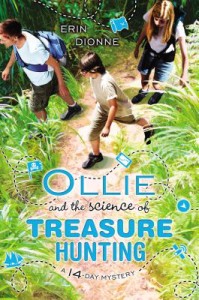 The students have so many questions and curiosities about how their much-loved favorites came to be and what writing is really like for professional writers. When we can engage with authors who are willing to share about their writing lives, writing does become more visible and real. The transparency helps students to see the ways in which their writing lives are more similar to the authors they admire than they are different.
The students have so many questions and curiosities about how their much-loved favorites came to be and what writing is really like for professional writers. When we can engage with authors who are willing to share about their writing lives, writing does become more visible and real. The transparency helps students to see the ways in which their writing lives are more similar to the authors they admire than they are different.
At NCTE, I was joined by authors, Erin Dionne, Cynthia Lord, and Linda Urban. These ladies graciously shared from their own writerly lives about some writing practices that can be sticky for student writers, including: keeping notebooks, mining ideas, seeking feedback, and reflecting on progress. Together we also offered participants practical ideas for supporting student writers to develop these practices in the writing classroom.
DIANNE: At NCTE, you spoke about your class’s collaboration with Linda Urban on her newest book, MILO SPECK, Accidental Agent. Your class had won a Skype visit as part of a promotion for Linda’s book, THE CENTER OF EVERYTHING, and, out of that, an author/classroom learning partnership was born. Can you talk about how that 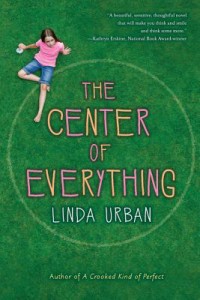 worked and the benefits you feel it brought to your students?
worked and the benefits you feel it brought to your students?
MELISSA: Our partnership with Linda Urban has been one of the highlights of my career thus far, really. I could write a book about the benefits it brought to my students!
While Linda was working with the manuscript for Milo Speck, she corresponded with my students pen-pal style. A lot of our correspondence was through email exchanges that we would compose as a class with my computer connected to the projector. Sometimes I would vary our responses to the writing Linda shared and incorporated other forms of writing: letters, postcards (which were great for visualization because the students were responsible for the image side of the card as well as the message), reading response notebook entries. We also used Skype for virtual visits, especially as Milo Speck neared completion. It was great to witness the exchange between Linda and my writers, especially on the day that she read the last chapters of the book to them. Linda surprised the students by coming to Maine to spend the day with us in June, and the students were able to share their writing with her, writer-to-writer.
By revealing her process, Linda gifted me a brilliant instructional resource. The relationship between Linda and my students was almost instantaneous. While they respected Linda as an accomplished writer, they weren’t intimidated or guarded about sharing. I learned so much about my students and their self-perceptions as writers as a third-party to their exchanges with Linda. Linda became an extended member of our writing community and was referenced in reading and writing conversations regularly. The students were highly engaged and motivated to try “what Linda Urban does.” By sharing her own writing and writing life with the students, Linda encouraged risk and vulnerability from the students. I saw the most obvious shift in their attitudes about revision. My students were characteristically  “one-and-done” writers who expected their writing to be publication-ready on their first attempt. Linda’s transparent example has not only made students more accepting of imperfection, but motivated my writers to celebrate “mess” as evidence that their writing is improving. The more my writers realized how much they had in common with a professional writer’s effort, challenge, celebration…the more the students perceived themselves as capable. In a sense, student writers gained a sense of permission that it’s ok to identify themselves as a writer, too.
“one-and-done” writers who expected their writing to be publication-ready on their first attempt. Linda’s transparent example has not only made students more accepting of imperfection, but motivated my writers to celebrate “mess” as evidence that their writing is improving. The more my writers realized how much they had in common with a professional writer’s effort, challenge, celebration…the more the students perceived themselves as capable. In a sense, student writers gained a sense of permission that it’s ok to identify themselves as a writer, too.
Not surprisingly–the partnership has also impacted my students as readers. Linda validated the students by seeking their feedback and giving their opinions value. As we learned more about the writing decisions Linda was making with Milo Speck, the students began to generalize their questions to other books and other authors, more often questioning what kinds of revision and/or craft choices authors may have made to arrive at their published version of the book.
My teaching situation is unique this year because changing grade levels has allowed me to have some of those students from each of our partnership classes again this year as 5th and 6th graders. On a daily basis I see and hear evidence of the shifts in my writers that I attribute to our collaboration and Linda’s revealed writing process behind Milo Speck.
DIANNE: Thanks for these valuable insights, Melissa!
There’s lots more good stuff to come! Please check back at the end of the week for more on Melissa and Linda’s book/writing collaboration.








